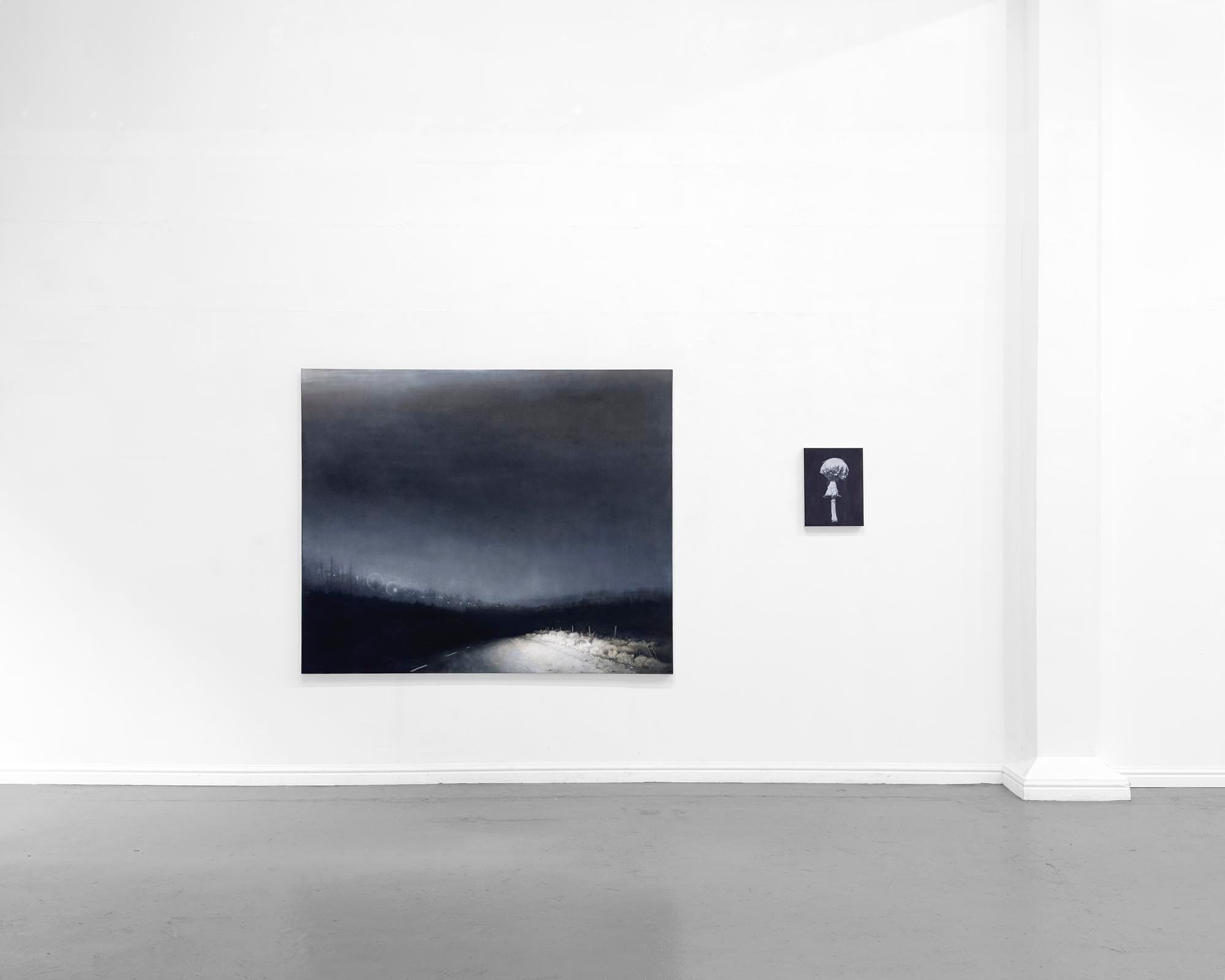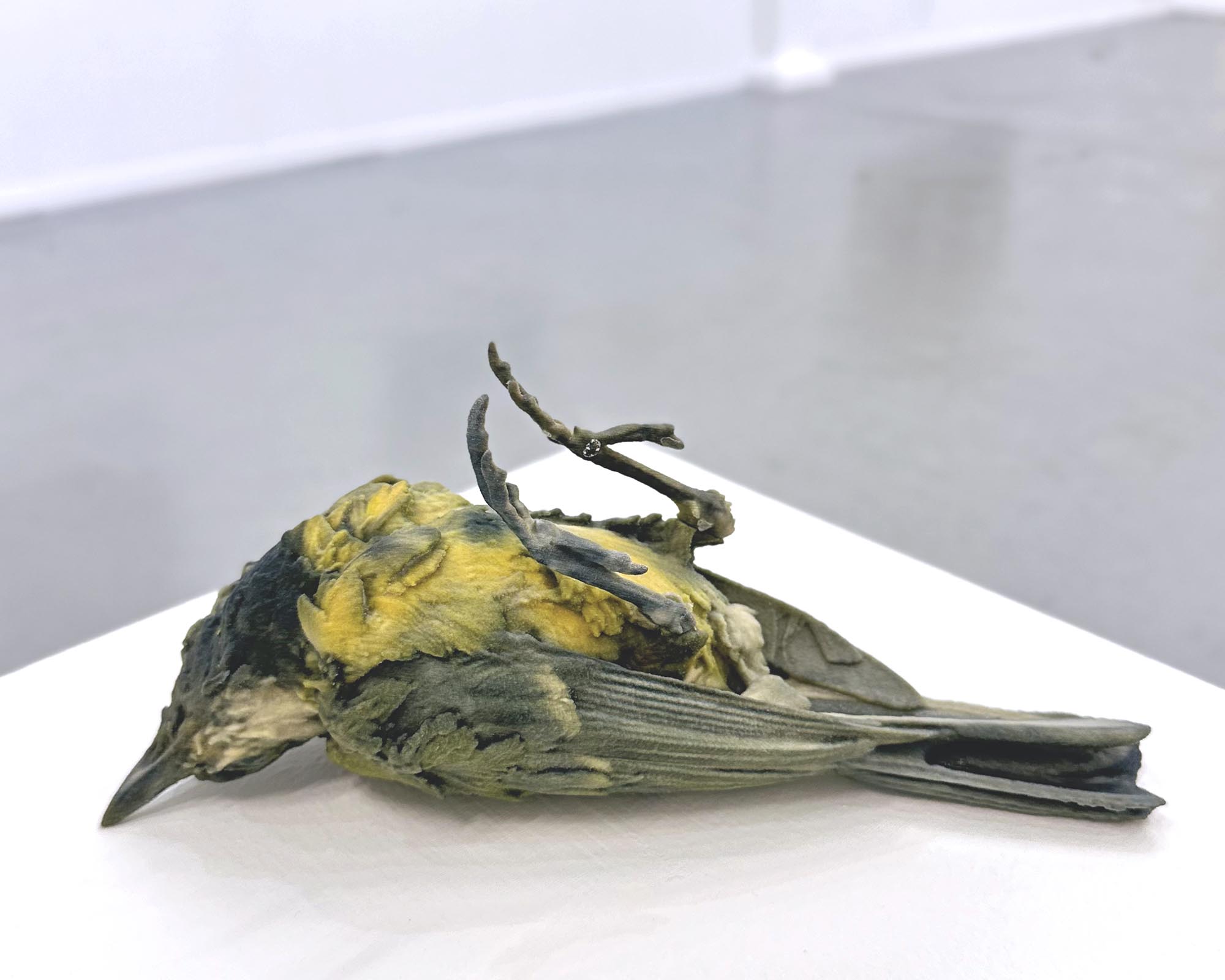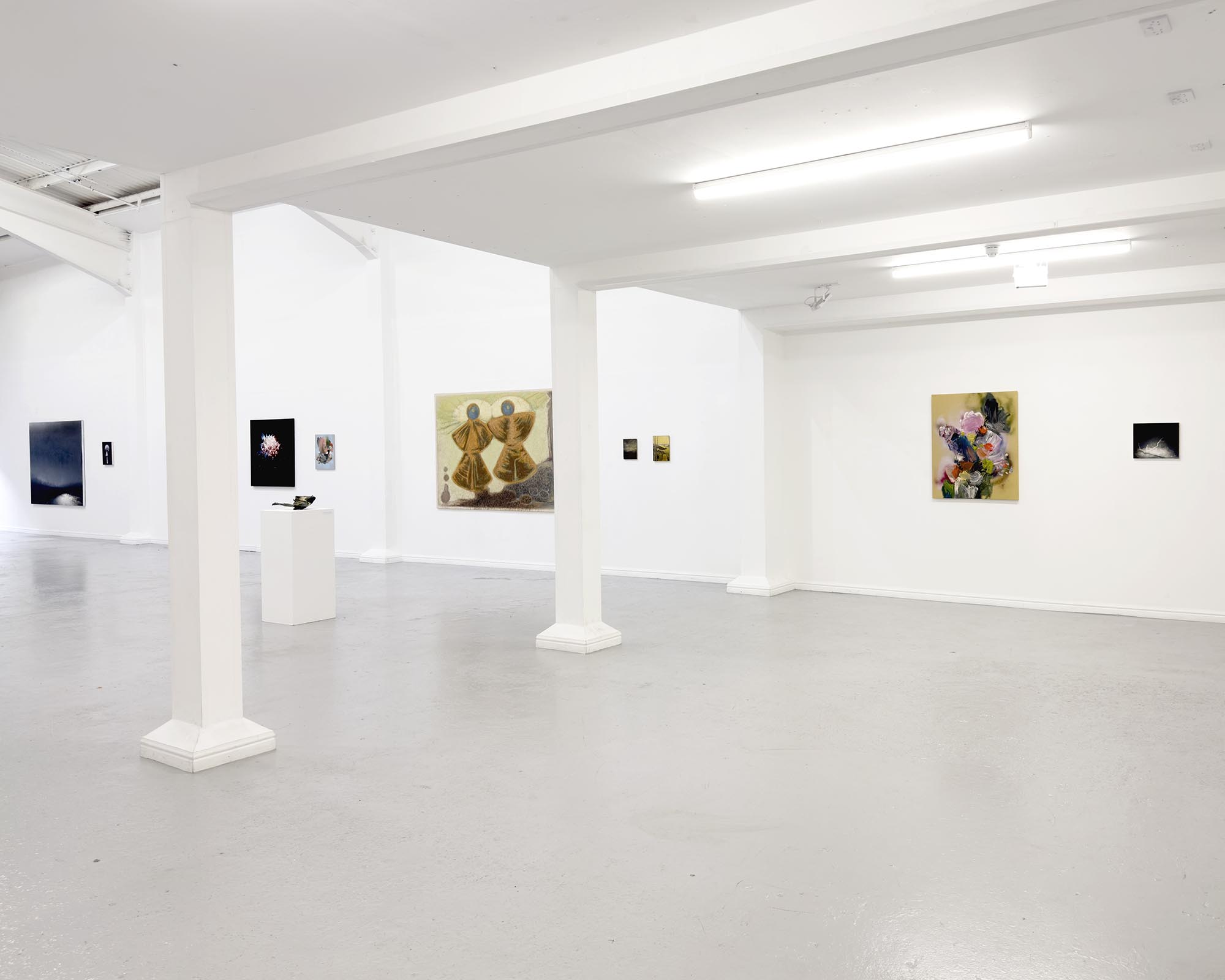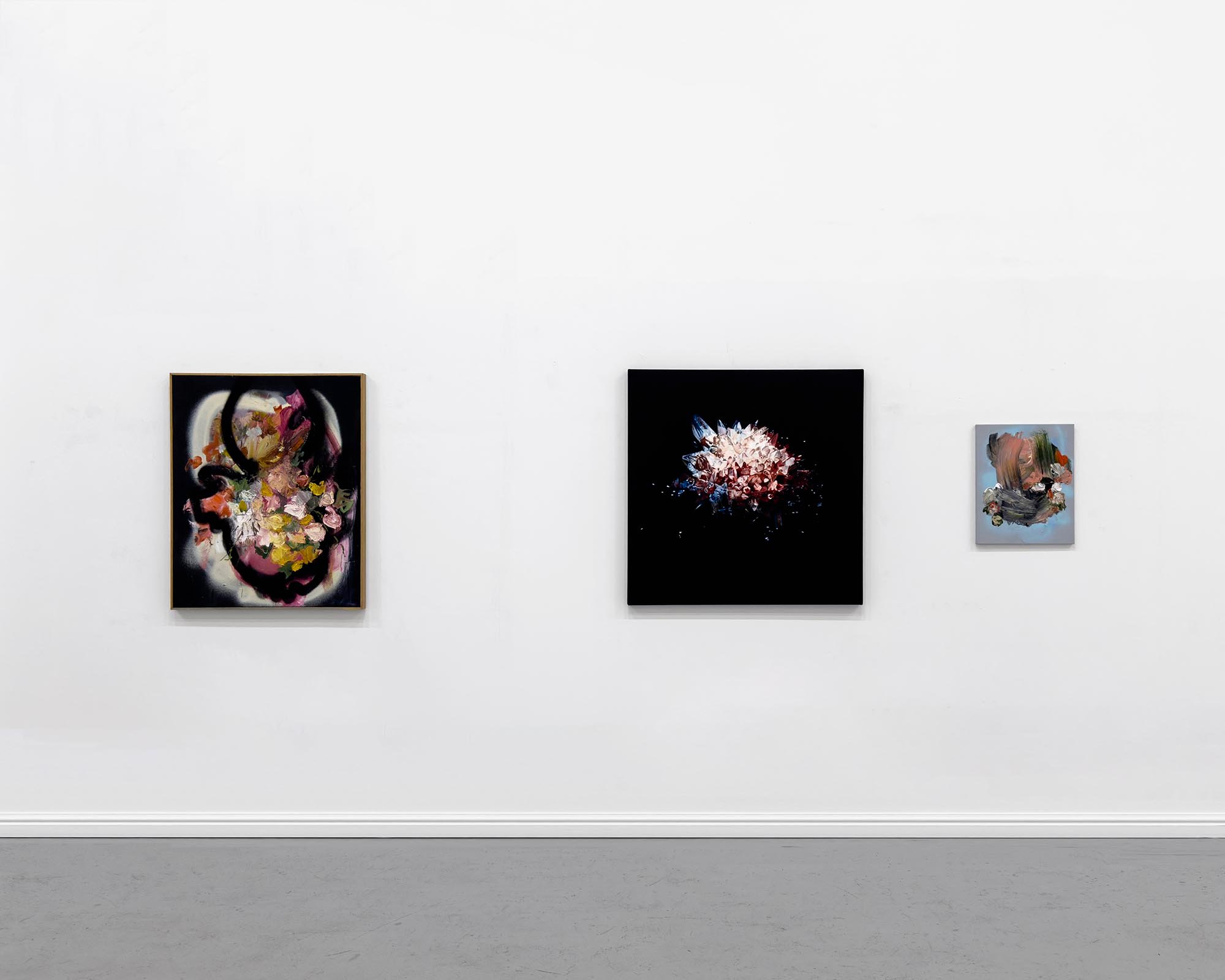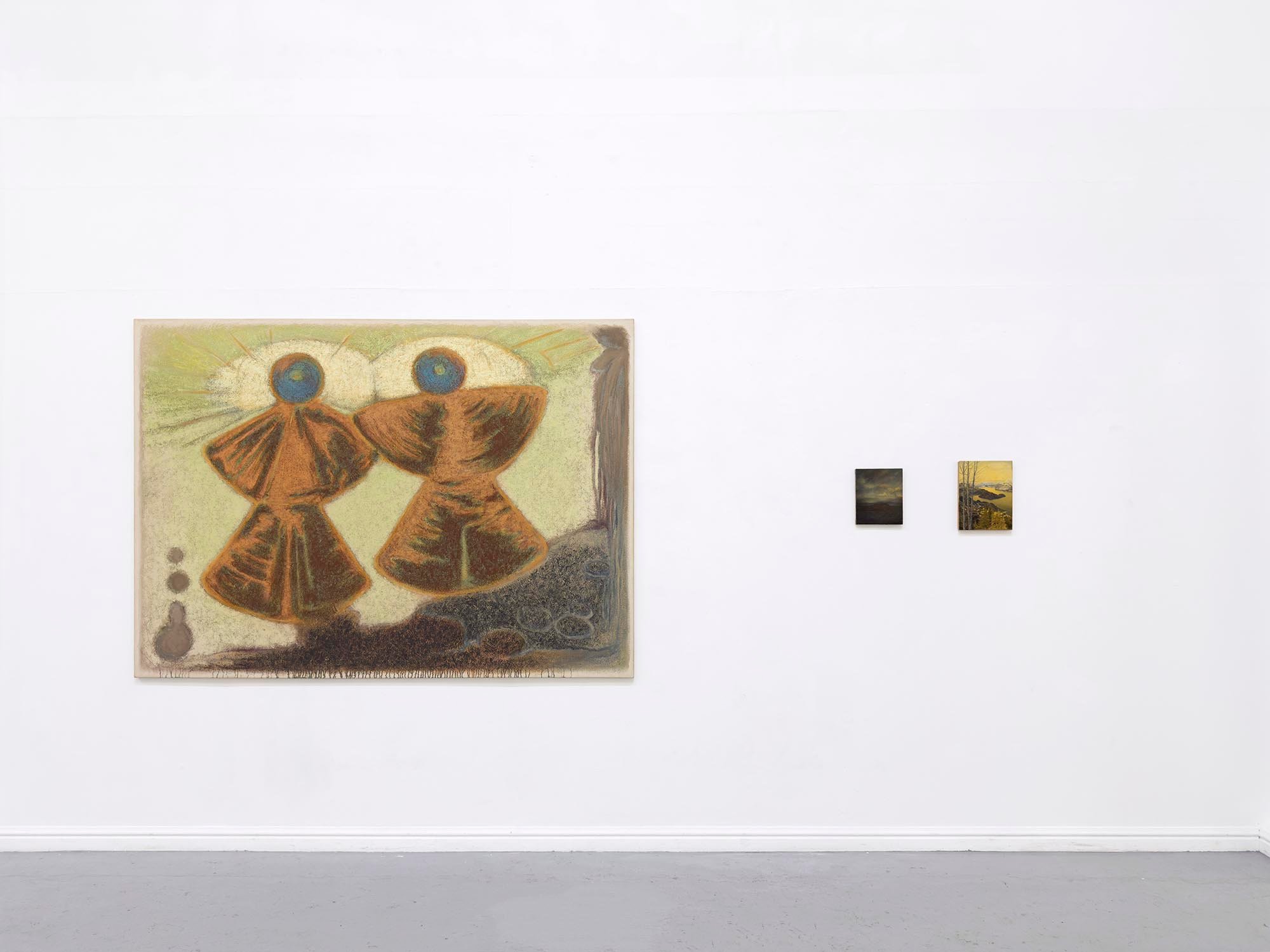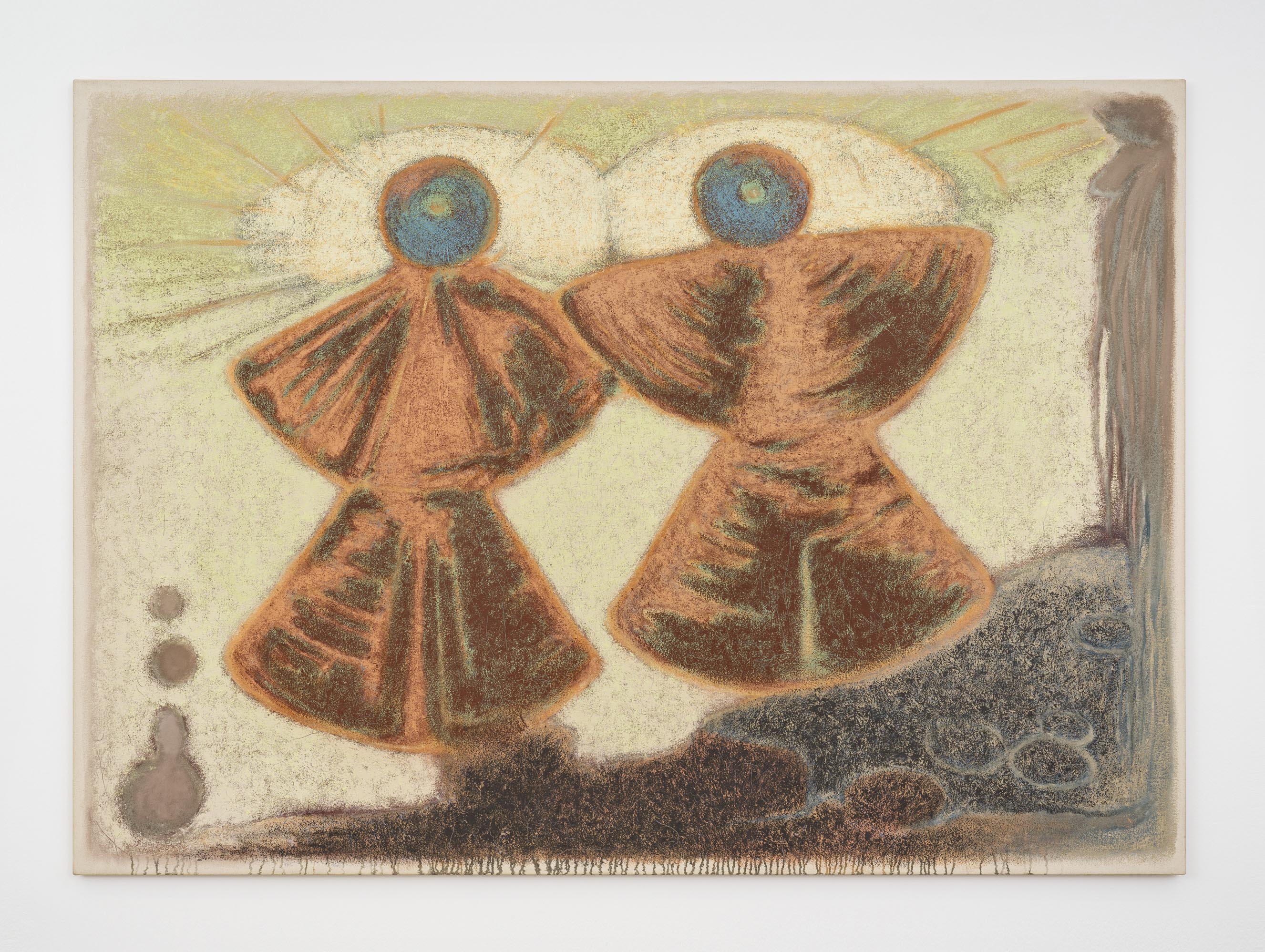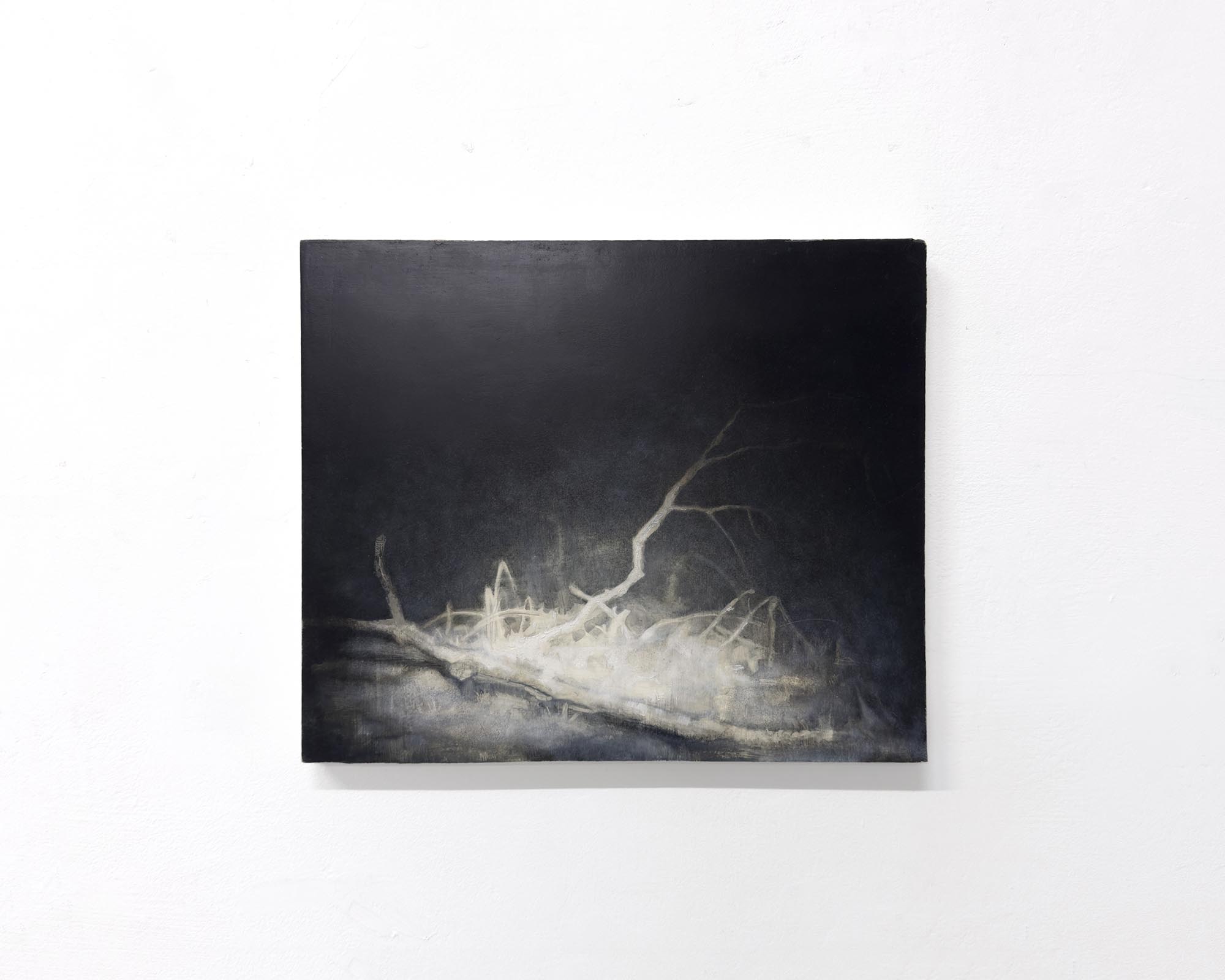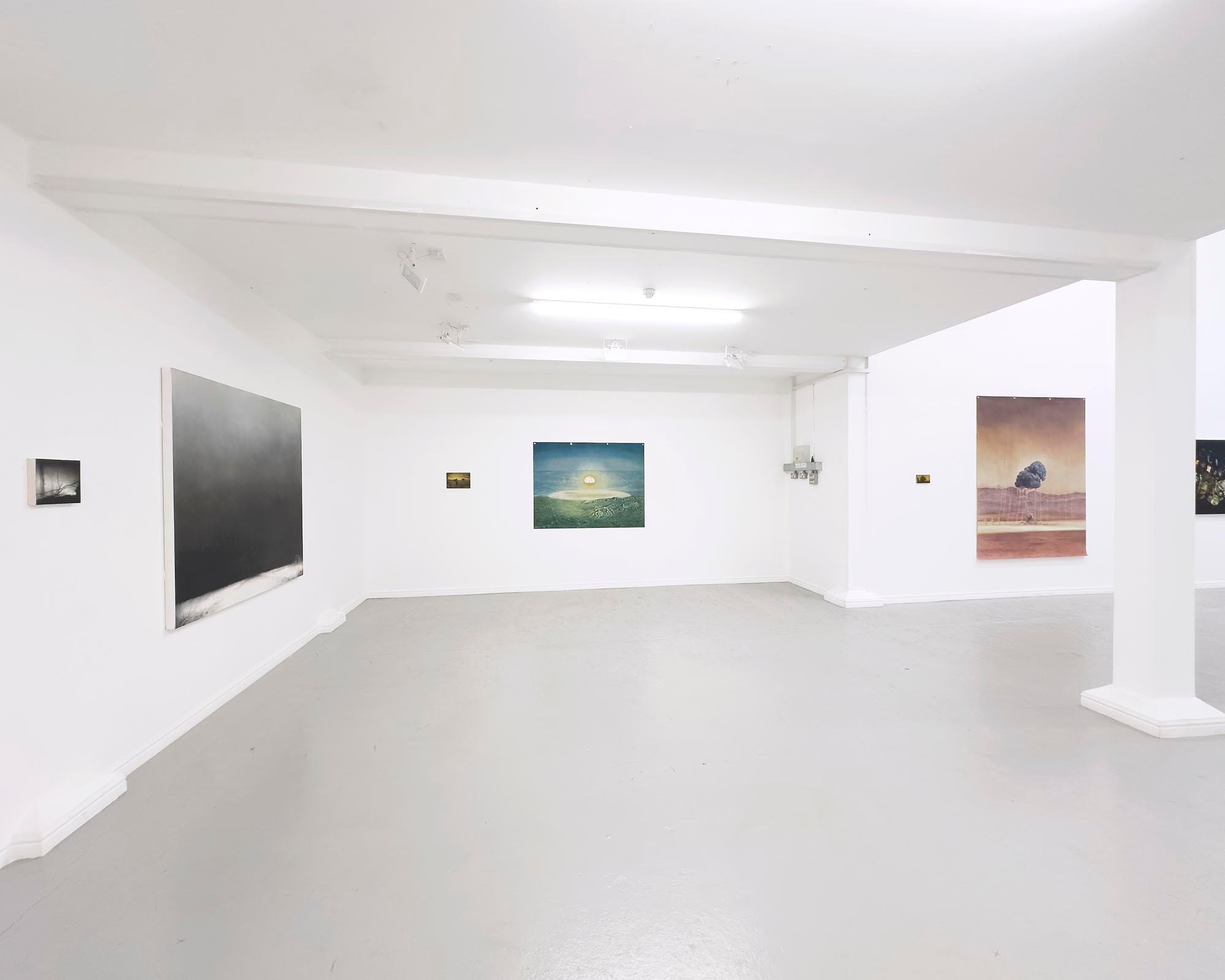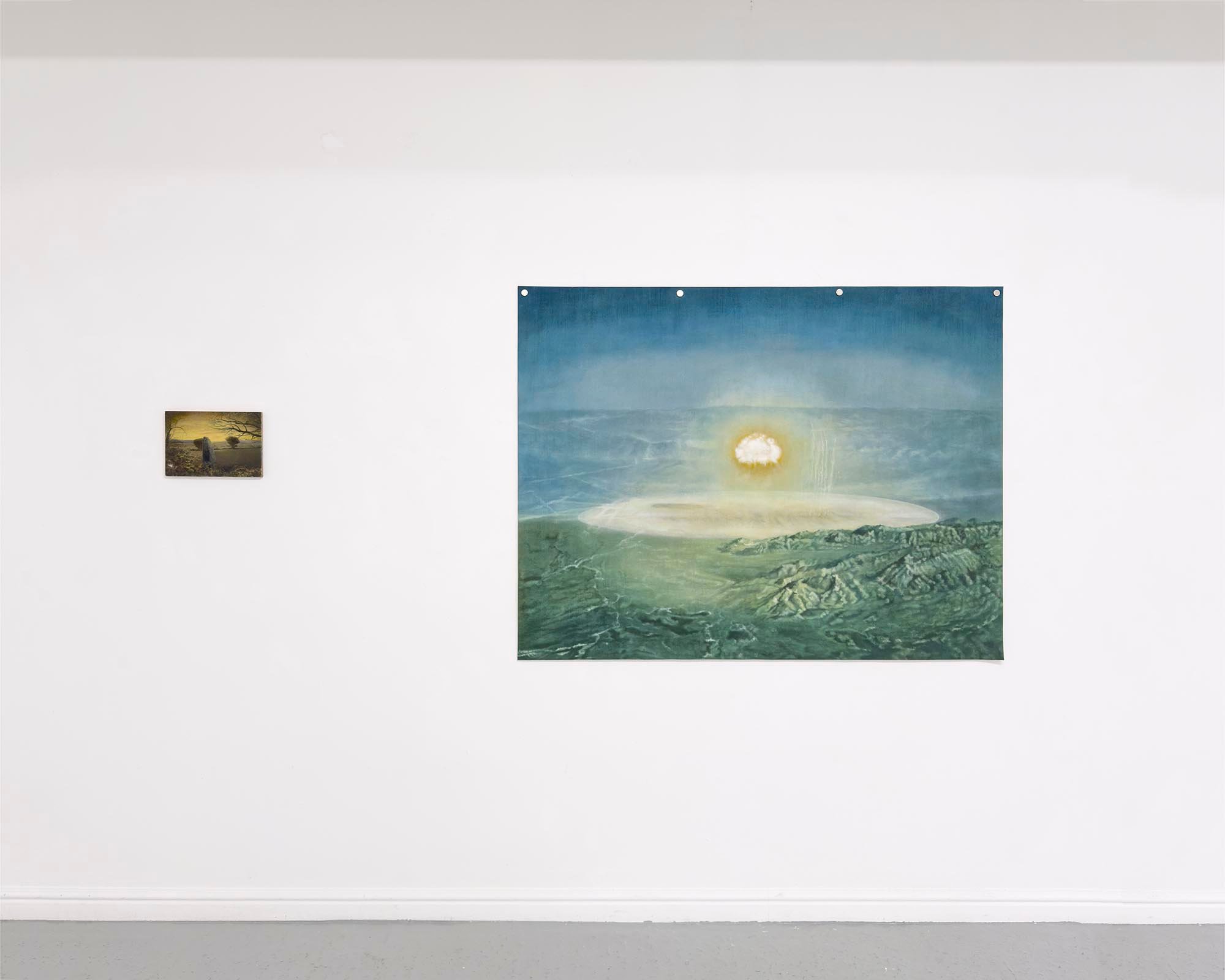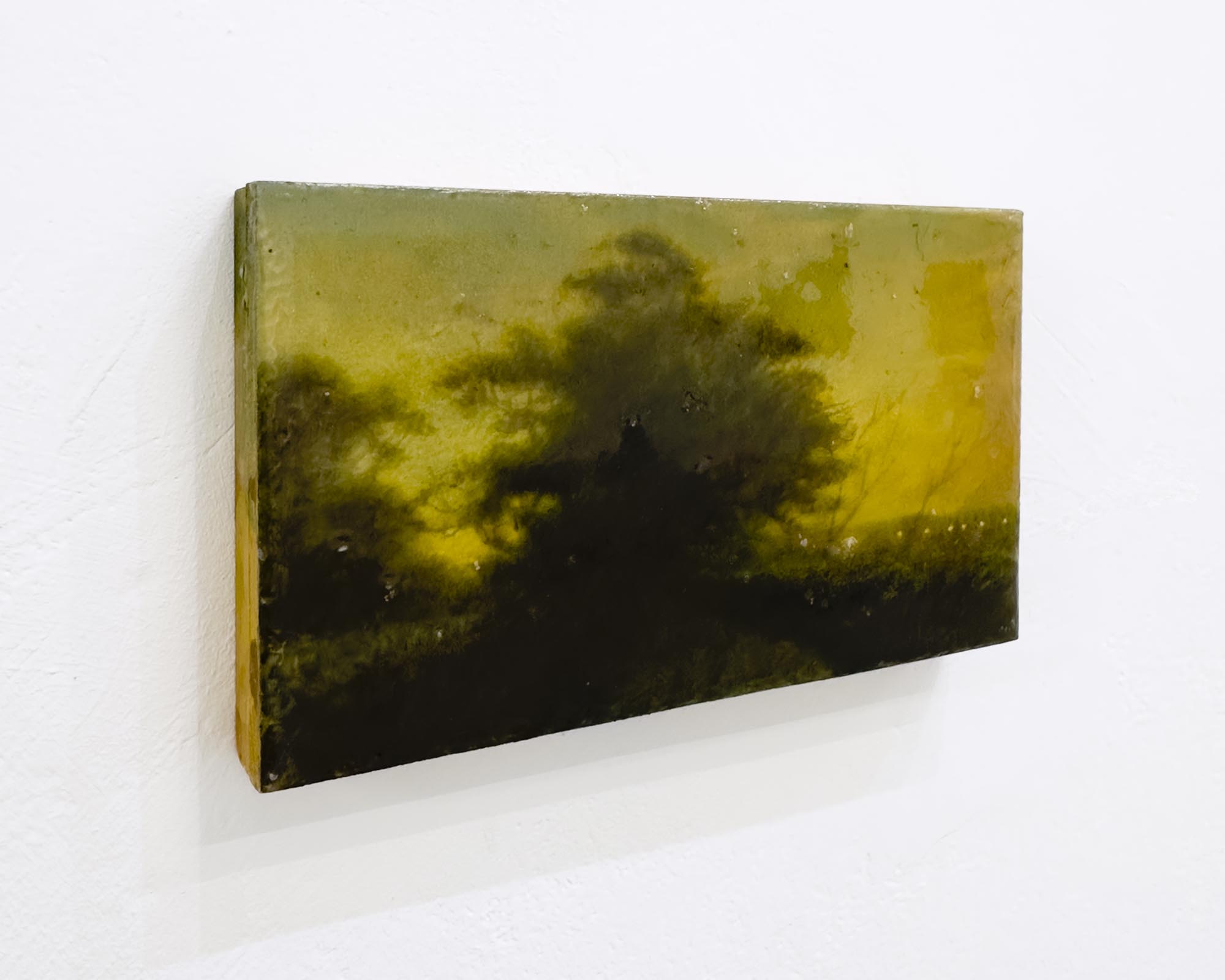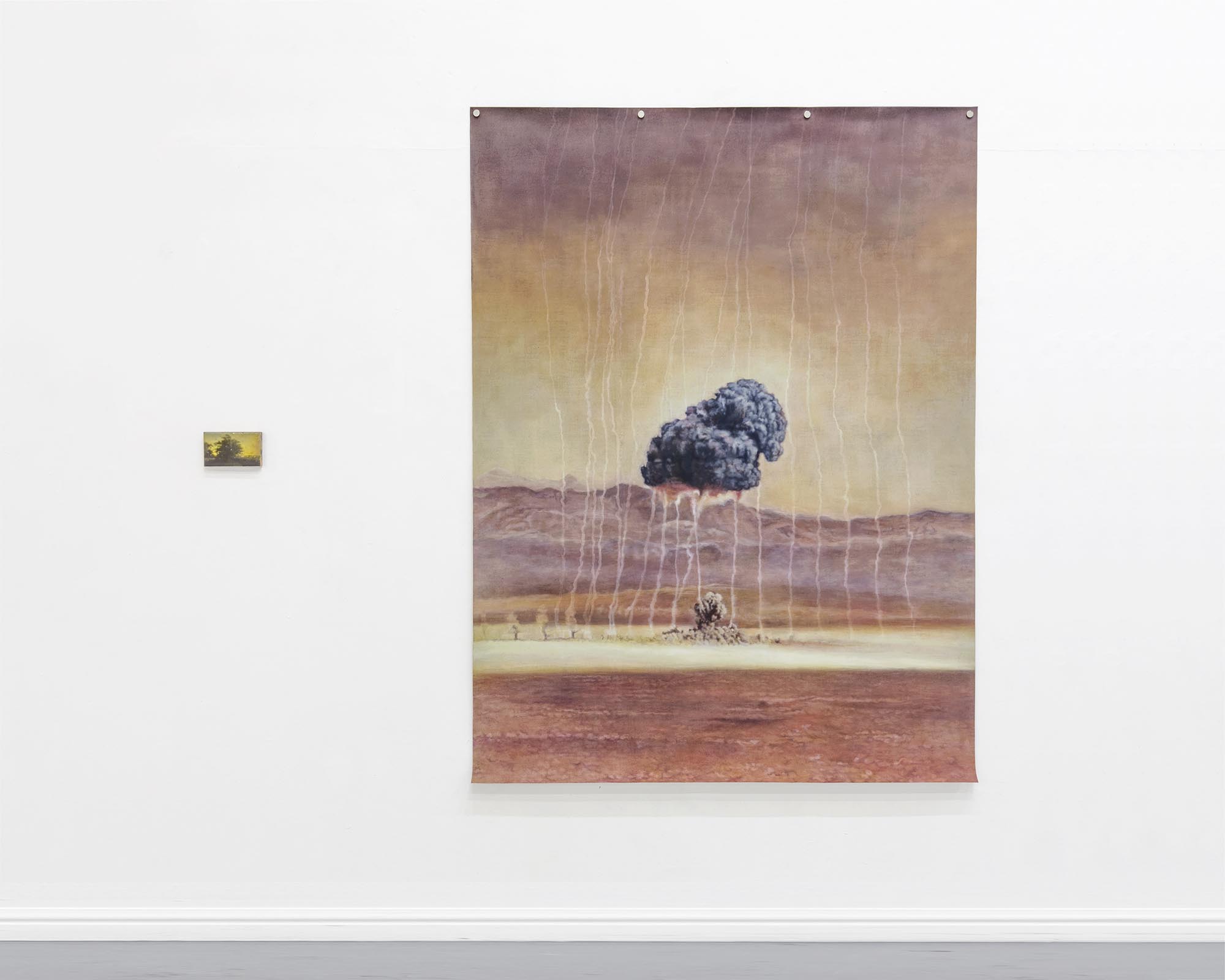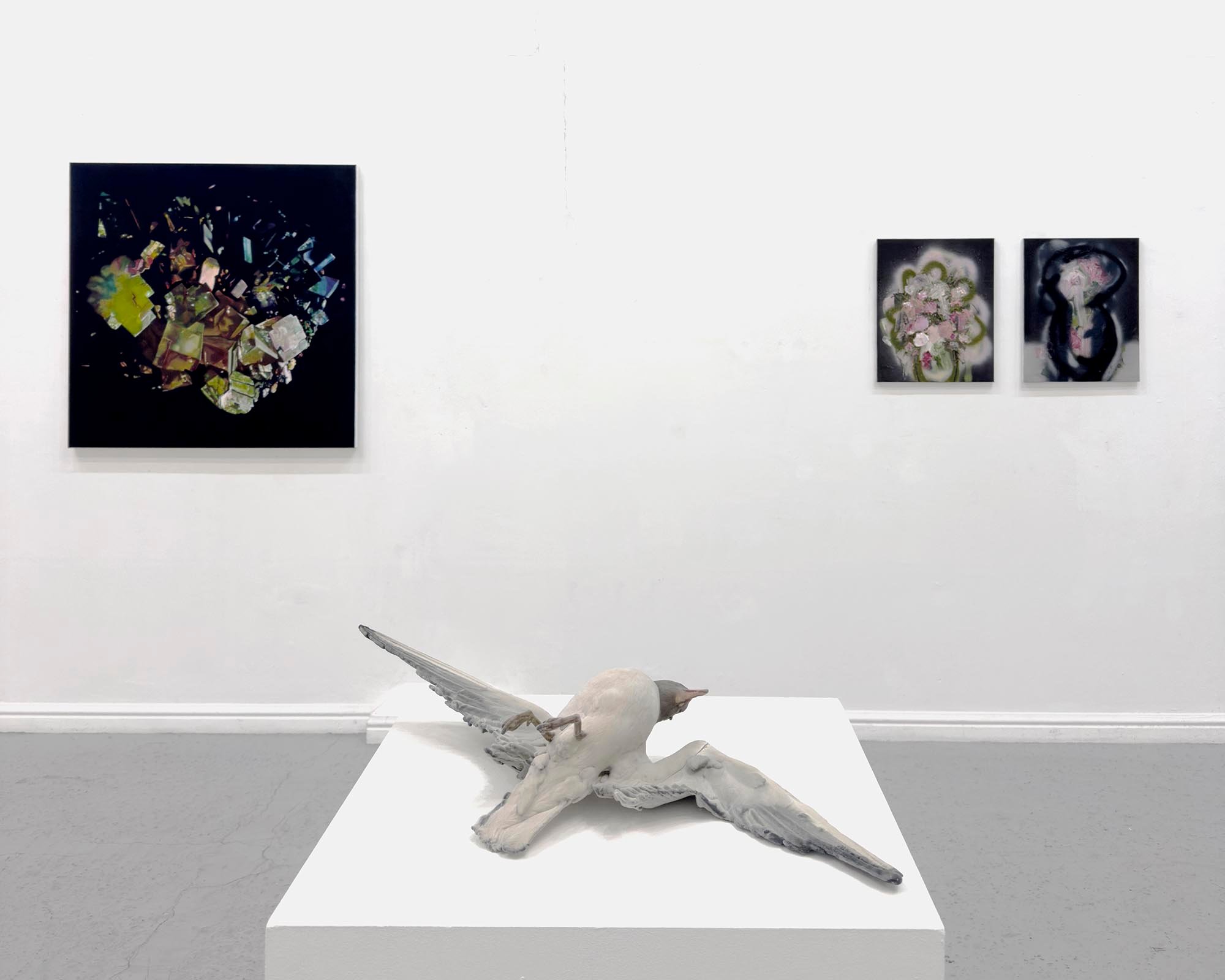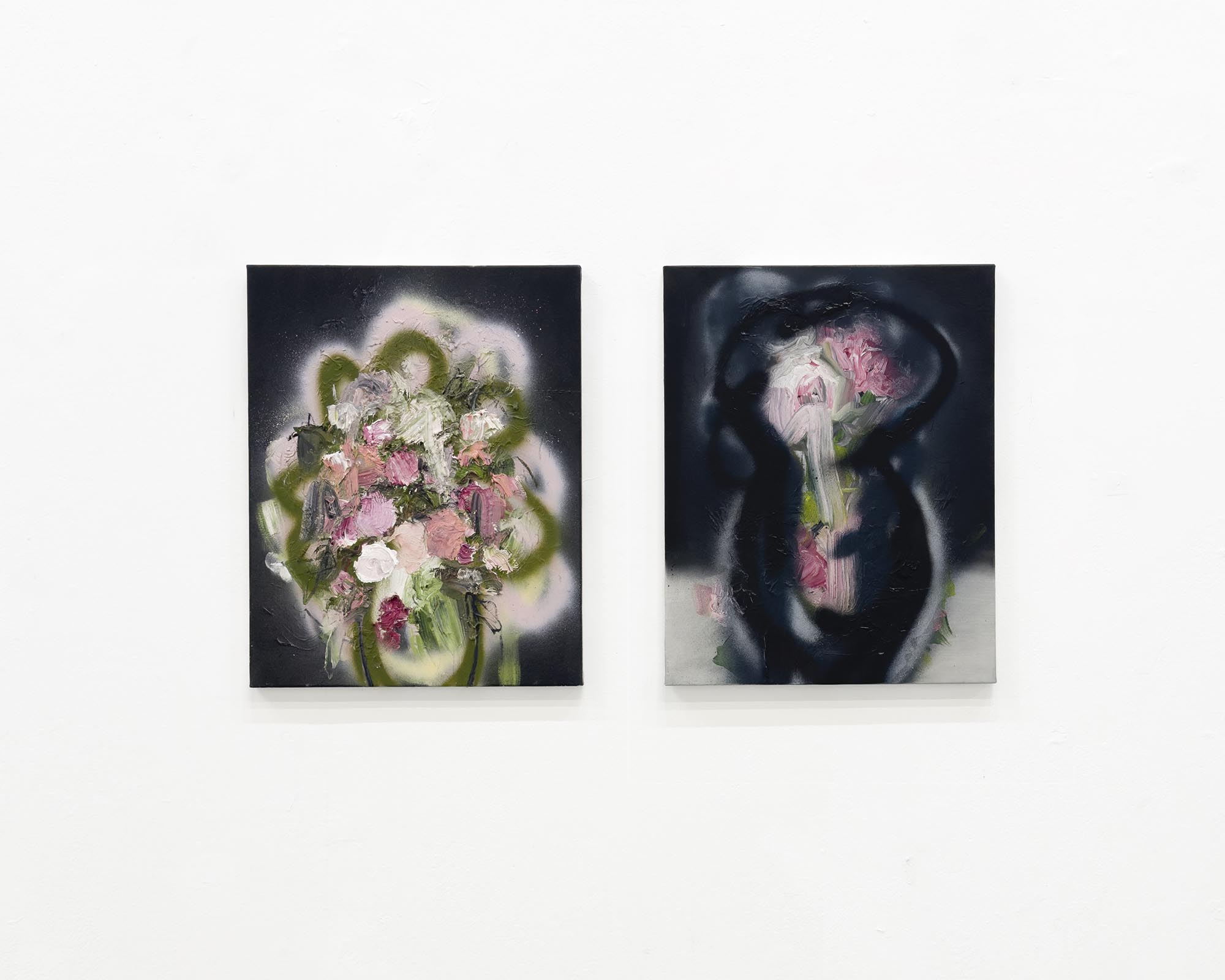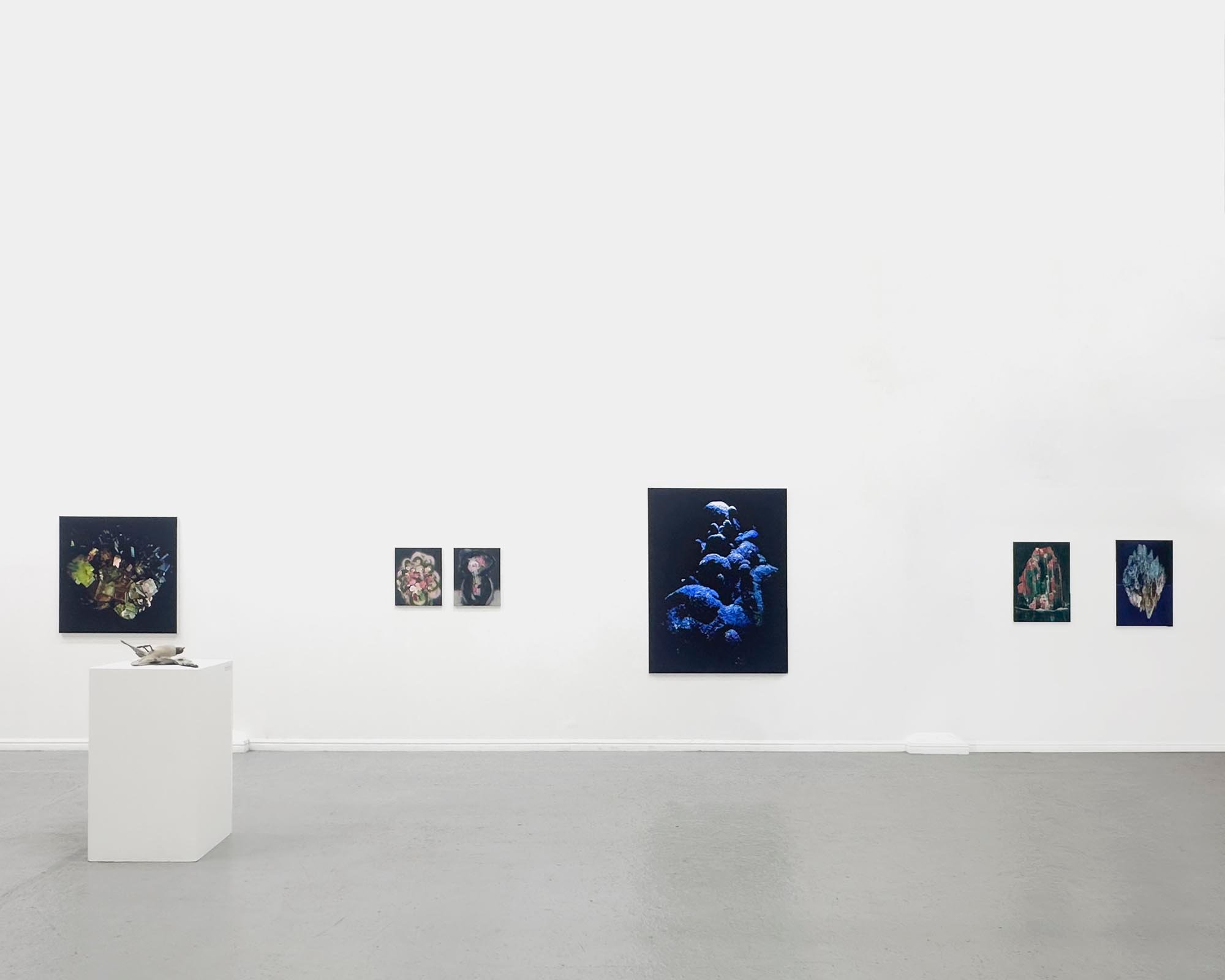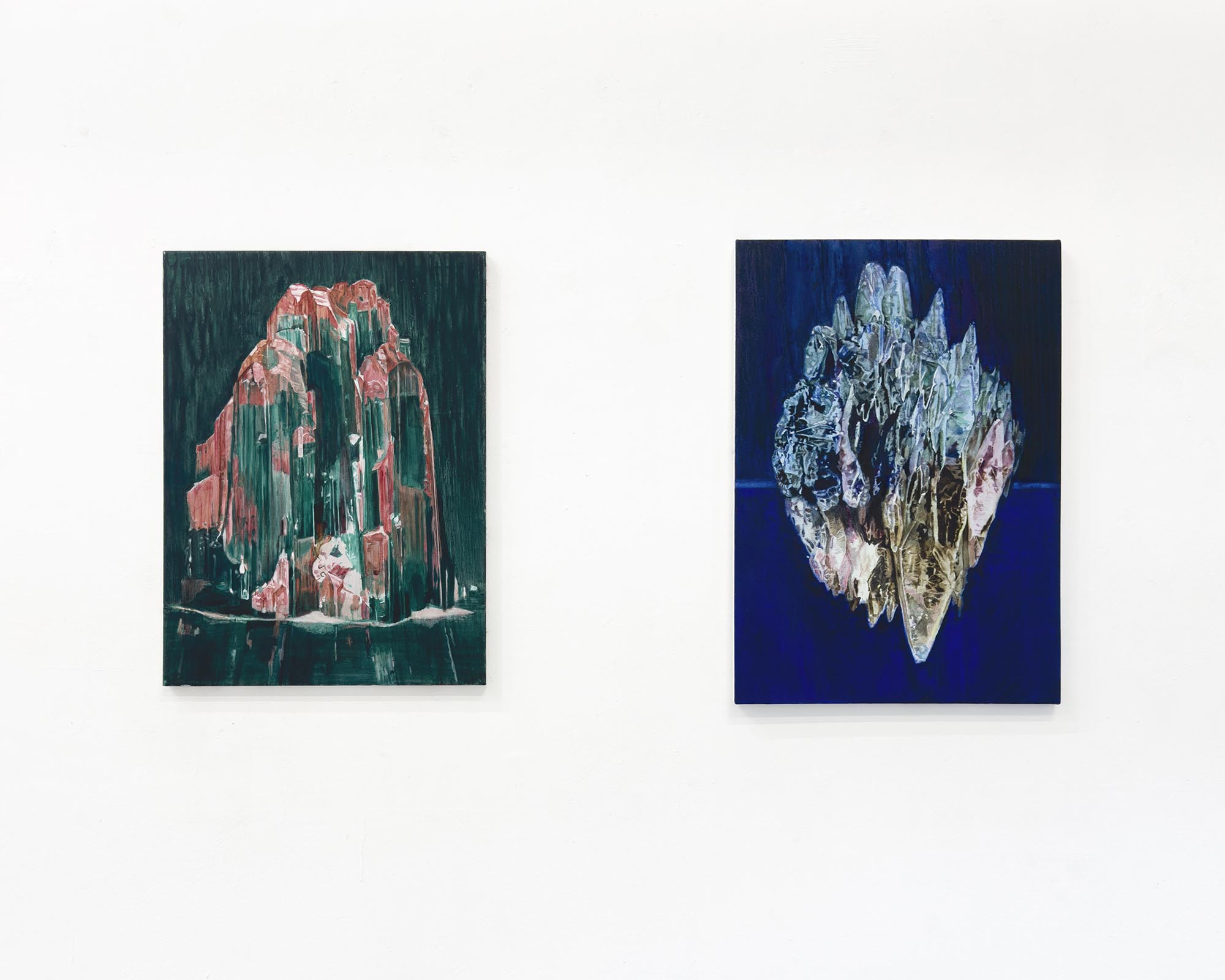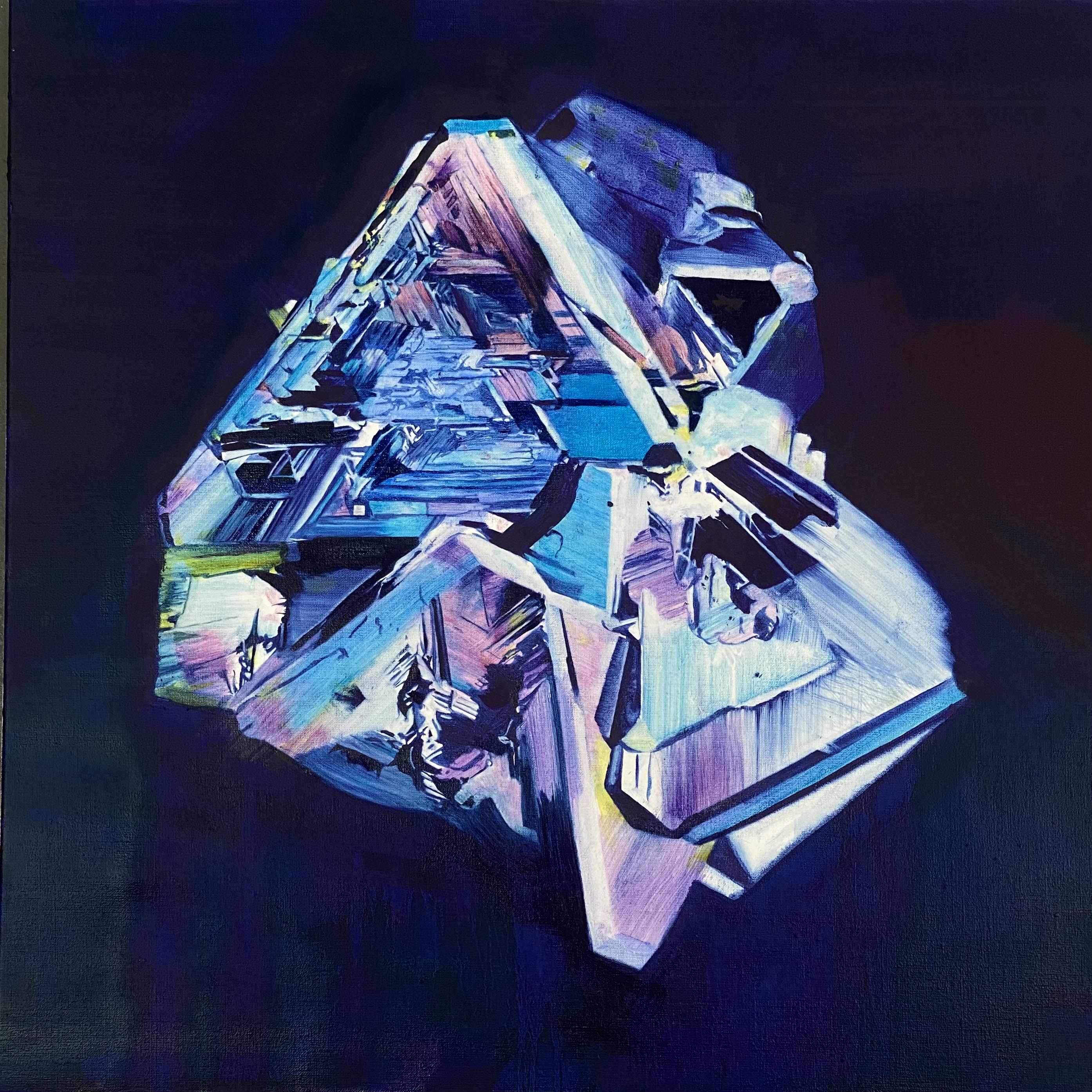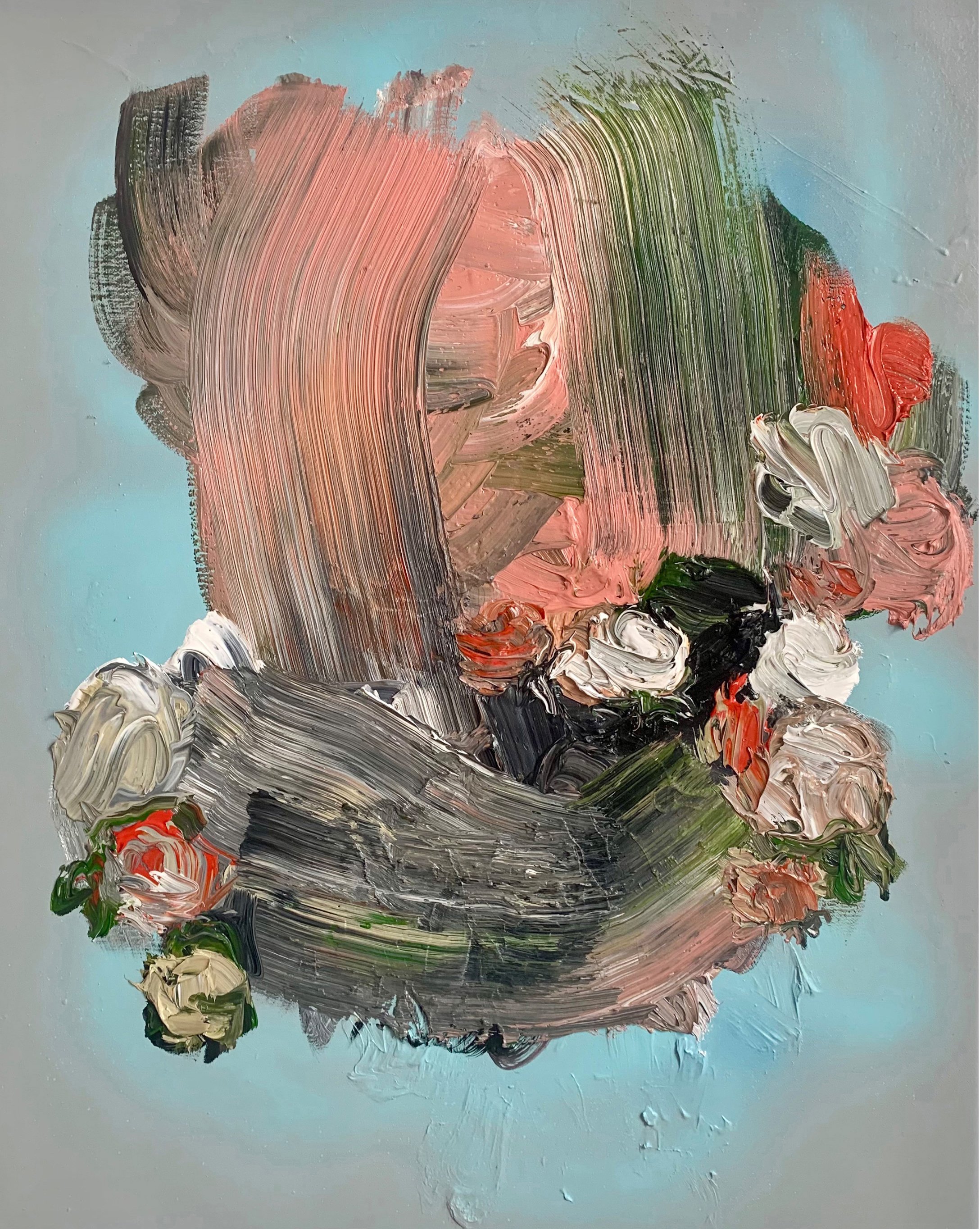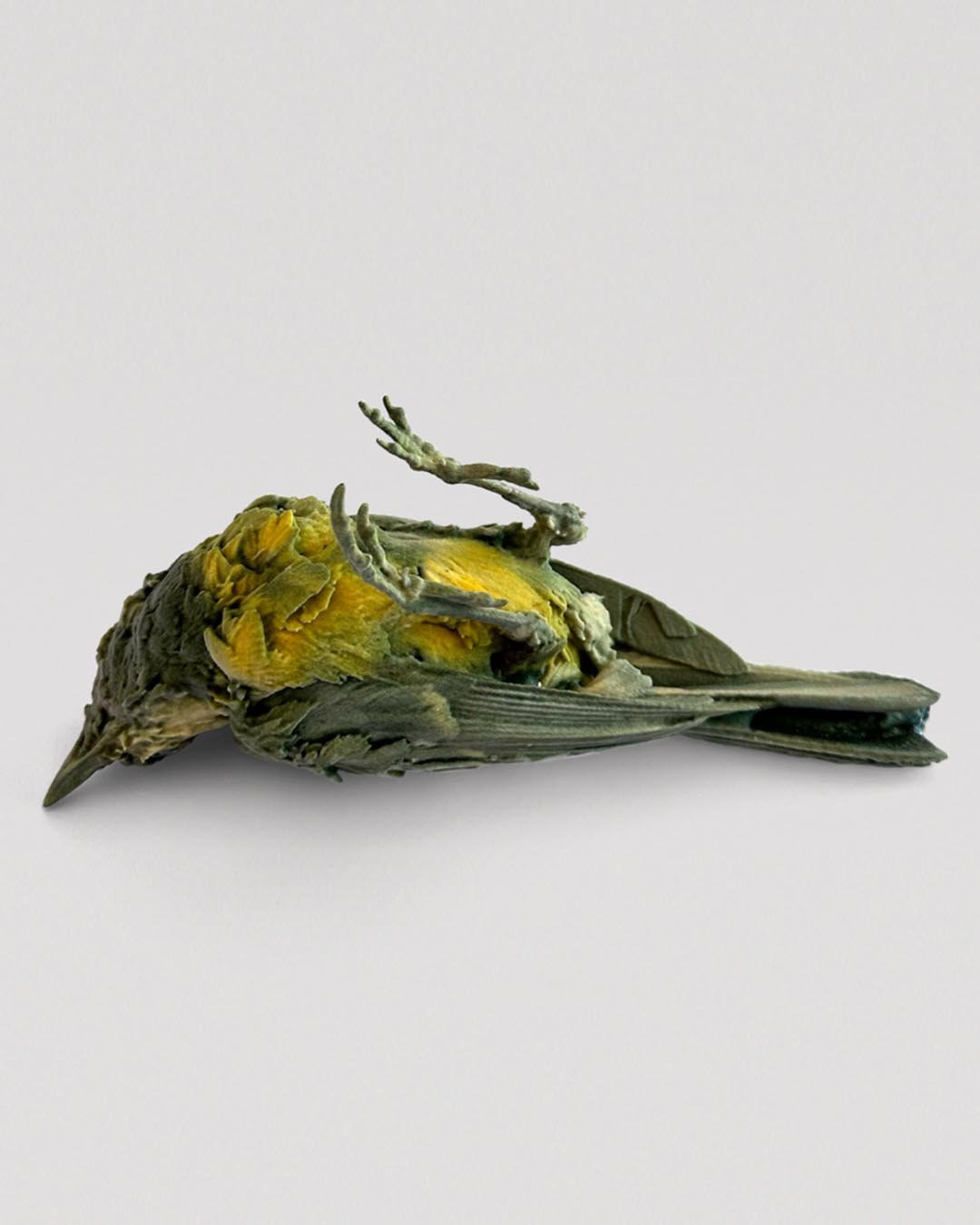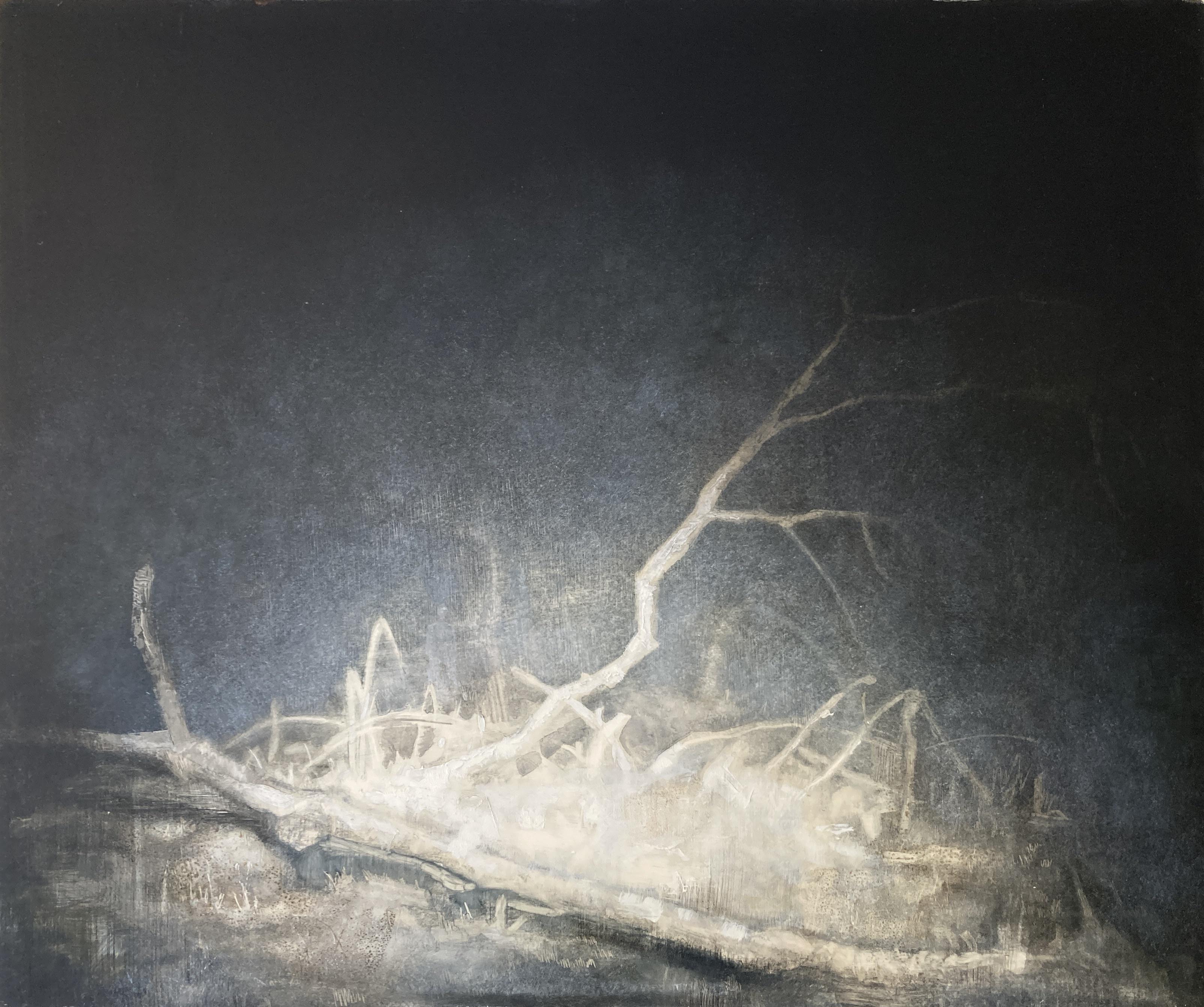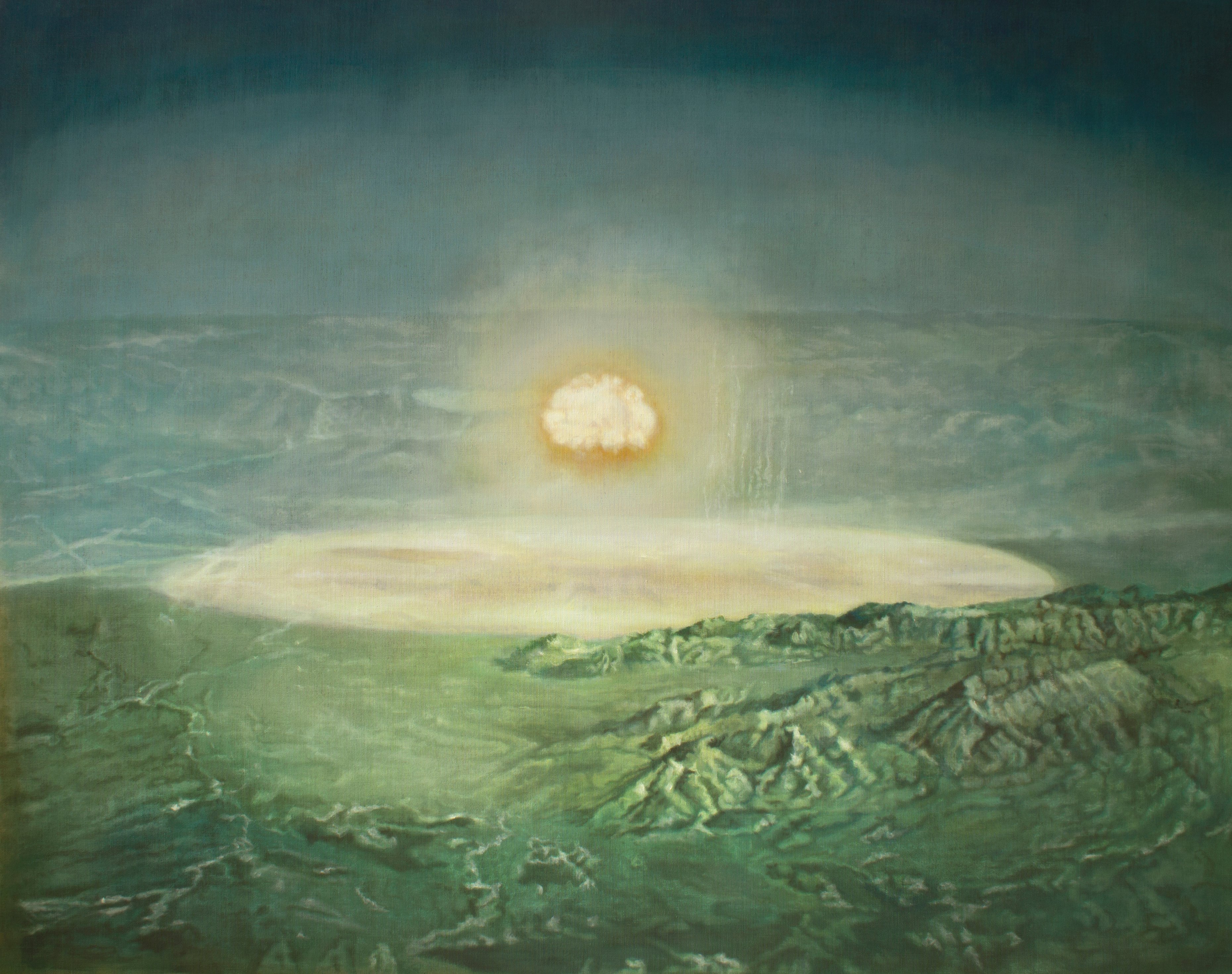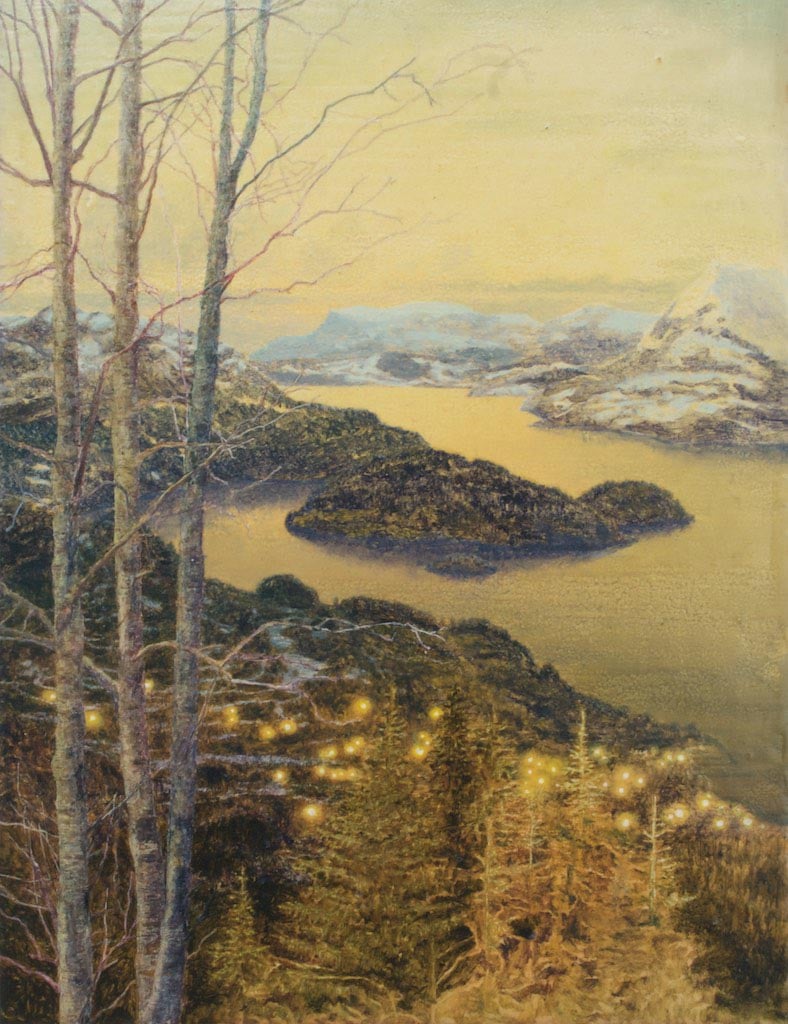& Still Different Worlds
Miranda Boulton, Martyn Cross, Sam Douglas, Michael Gurhy, Kirsty Harris, Paula MacArthur, Donna Mclean
Sunday 2nd November, 12-2pm In conversation with Jennifer Higgie, the artists discuss their work and the ideas behind the & Still Different Worlds exhibition. Followed by exhibition finissage with refreshments. Please book a free ticket via Eventbrite. We are pleased to present & Still Different Worlds. A group exhibition featuring seven artists working in the UK today. “I learned that just beneath the surface there's another world, and still different worlds as you dig deeper…there is goodness…but another force, a wild pain and decay, also accompanies everything.” David Lynch Something is pressing up from beneath. The surfaces hold back histories and myths, they do not feel like fixed boundaries but rather, thresholds. The artworks share a preoccupation with forces that exceed our control; erosion, detonation, evaporation, spectral return, decomposition, ecological fragility or blinding light. Considering painting as an object or monument, the mark making becomes almost stubborn, confidently holding its ground at the eye of the storm. For Martyn Cross, the canvas is not a passive ground but something to wrestle with. His small works are cradled, held close; while others are rubbed down with rags, scuffed, even kicked about the studio. This physical push and pull becomes a kind of workout, a way of forcing the paintings to absorb energy, friction and care in equalmeasure. Reoccurring motifs emerge throughout his work: billowing clouds, tumbling waterfalls, oversized fingers point out at us, while bright pastel suns complete an immersive world. Michael Gurhy’s sculptures hover between the intimate and the surreal, where fairy tale meets the feral. For Michael, birds have long been messengers, bearers of mythology, omens and symbols of metamorphosis. 3D printing is often tied to futurism, innovation, and repair, it can reproduce broken parts and create prototypes. But in Gurhy’s work, the printer does not heal or bring back life. Instead, it reproduces death. The birds become uncanny doubles - both faithful reproductions and distorted, ghostly forms. They remain untouchable, poised between nature and artifice. Donna McLean is drawn to uneasy imagery imbued with an eerie beauty that simultaneously comforts and disturbs. A painter of atmosphere and light, she conjures up a strange hushed world, a cinematic memory recalled in a dream. Each formal component that goes into making a painting works like a scaffold on which to drape the mood. The otherworldliness of Paula MacArthur’s glassy, geometric forms spark infinite imaginings on love and loss. In oil paint she finds an equivalent magic and uses luminous colour to create intricate landscapes and new, unreachable worlds. Just like precious stones, the radiance and discomfort in MacArthur’s paintings demands constant re-adjustment. Up close, the marks reveal a loose intensity; at a distance, the beauty of the image reasserts itself. During Miranda Boulton’s explosive process, paint is built up and scraped back, the canvas is turned more than once to destabilise the composition. Different speeds of marks are apparent, built up into thick impasto that takes months to dry. Boulton works directly onto the canvas recalling memories of a specific historical floral painting. Building from the instability of memory, as opposed to directly referencing the historical work, her desire to respond to the original memory is eventually abandoned. Kirsty Harris’s practice centres around the violent, man-made events that scar the landscape: the detonation of the atomic bomb. She returns again and again to that decisive moment, a split second of destructive force, and contemplates it over months of making. All her work sits inside this tension: the awe, the absurdity, the abhorrent nature of human ambition. Working on many paintings at once, Sam Douglas builds up and sands back layers of paint and thick varnish in cycles that echo the geological processes of sedimentation and erosion. Beneath, these paintings retain the strata of previous images that emerge like archaeological remnants. His small paintings remain murky and reflective and there is a melancholic quality to his landscapes which, following certain romantic motifs, often depict twilight. The artworks in & Still Different Worlds resist resolution and persist as afterimages, burned onto the retina. & Still Different Worlds is kindly supported by Contemporary British Painting. Thames-Side Studios Gallery Thames-Side Studios Harrington Way, Warspite Road Royal Borough of Greenwich London SE18 5NR Open Thursday-Sunday, 12-5pm, during exhibitions. For general Thames-Side Studios Gallery enquiries please email [email protected] Disabled access. Free, limited parking is available on site. How to get here: Bicycle: Thames River cycle path (16 mins cycle from Greenwich). Bus: 161 / 177 / 180 / 472 to Warspite Road bus stop. DLR: Woolwich Arsenal (1 minute walk to Plumstead Road and take Route Bus 177 towards Peckham Bus Station or 472 towards North Greenwich Station). Road: A2 corridor, first roundabout east of Thames Barrier onto Warspite Road. Train: From Cannon Street or London Bridge to Woolwich Dockyard (8 minute walk) or Charlton (12 minute walk). Tube: North Greenwich (Take the Route Bus 472 towards Thamesmead Town Centre). Crossrail: Elizabeth Line to Woolwich (take Route Bus 177 towards Peckham Bus Station or 472 towards North Greenwich Station).
